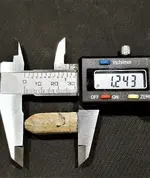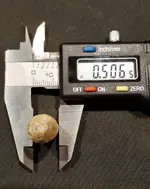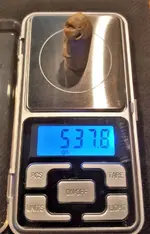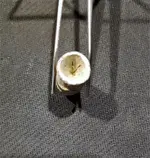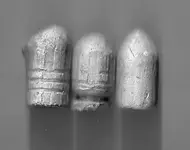Meant to reply to your ID-request sooner, m'friend... but I've been ill. First... your fired bullet's precisely measured diameter indicates it was fired from a .50-caliber rifle. The only bullet I know of which has the 6-spokes swage mark in its base is the civil war yankee .58 Machine-Pressed-&-Turned minie-bullet. (Incorrectly known as a "Swaged-base" minie.) The Thomas-&-Thomas "Handbook Of Civil War Bullets & Cartridges: says that bullet's precise weight is 538 grains, which matches exactly with your bullet's weight. I do believe your bullet is a 6-spoke "Swaged" minie which was fired from a .50-caliber (or .52-caliber) Breechloader. The circa-.570"-diameter mine was placed into the "oversize" breech and fired through the rifle's .50" (or .52") diameter bore... which had the effect of squeezing & stretching the bullet. We know this happened with .52 Sharps Rifles. But this situation would HAVE TO be a .50 Breechloader which did not use a metallic cartridge. The problem is, I don't know of any such .50 Breechloader. The .50 Smith Carbine bullet had a rubber casing to seal the breech, and a percussion-cap for ignition. The .50 Smith is the only candidate I can think of for what fired your .502"-diameter "stretched" minie.
BUT... the .50 Smith had only 3 rifling grooves. You've reported 6 rifling marks on your fired minie. The .52 Sharps had 6 grooves. So that makes me think maybe your bullet was fired from a .52 Sharps but has lost some of its original diameter due to corrosion. I think that has to be the correct diagnosis, because the Smith's 3-groove rifling excludes your bullet.
The crude scan attached below shows some .58 bullets which got "stretched" by firing through a .52 Sharps gunbarrel. From left to right, those bullets are:
.58 Williams Regulation minie
.58 Williams "Bore-Cleaner" bullet
.56 Richmond Arsenal Sharps bullet



